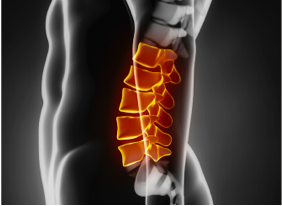This study was a secondary analysis of the prospectively collected Veterans Affairs National Surgical Quality Improvement Program (VASQIP) database. The objective was to determine the rates of major medical complications, wound complications, and mortality among patients undergoing surgery for lumbar stenosis and to examine risk factors for these complications. The authors identified patients who underwent surgery for a primary diagnosis of lumbar stenosis between 1998 and 2009 from the VASQIP database. They created a composite of major medical complications, including acute myocardial infarction, stroke, pulmonary embolism, pneumonia, systemic sepsis, coma, and cardiac arrest. The results showed that among 12,154 eligible patients, major medical complications occurred in 2.1%, wound complications in 3.2%, and 90-day mortality in 0.6%. Major medical complications were strongly associated with age. Insulin use, chronic corticosteroid use, and preoperative functional status were also significant predictors. Fusion procedures were associated with higher complication rates than decompression alone. In logistic regressions, American Society of Anesthesiologists (ASA) class and age were the strongest predictors of major medical complications. The authors conclude that ASA class, age, type of surgery, insulin or corticosteroid use, and functional status were independent risk factors for major medical complications. Spine (Phila Pa 1976). 2013 June. PMID: 23778366









